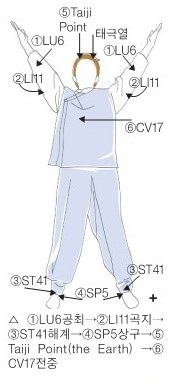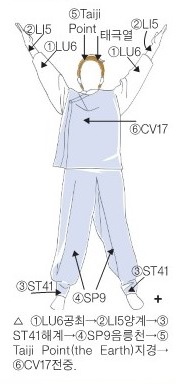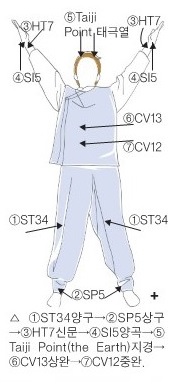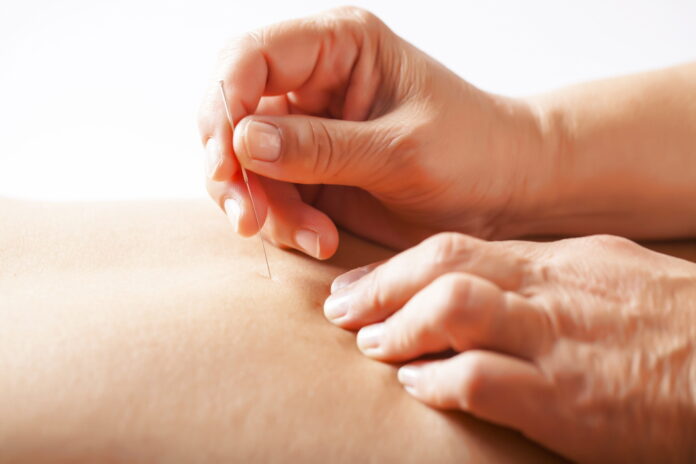By Brandon SJ Oh, L.Ac.
Last month, I already explained the definition of cleft points and theories for applying the cleft points and indications for each cleft point. For this month, I will show how to formula the acupuncture point with cleft points for each case of acute symptoms.
▲ Acupuncture Point Selection Principle
Do not try to find the causes of a symptom such as emptiness or fullness in acute symptoms. As you deal with such an aggregate pain, hemorrhage, any acute and serious symptoms, and painting, it is not required to diagnose and to find the emptiness of fullness.
For treating such symptoms, apply cleft points. The general procedure for inserting needles that take points on the upper body yin meridian first then select points on the lower body yang meridian is not applied.
First, take cleft points, then control Qi movements on four meridians according to each meridian’s original Qi movement sequence. Select the most appropriate pair of cleft points and enhance Qi movements on four meridians, including where the cleft points belong, and pick one expelling point located on elbow and knee areas to add power for Qi movement faster and stronger. Then use harmonizing points to control overall Qi movements by acupuncture treatment.
As cleft points are applied, the harmonizing acupuncture point groups are determined by their distance to the nearest location of a cleft point. For example, ST34, a cleft point on the Stomach meridian close to the knee, is considered harmonizing acupuncture points.
Acute symptoms should have more connection to the heaven; therefore, after treating with cleft points, Taiji points on the head must be used.
It is also possible to add extra acupuncture points after done using cleft points. For example, CV17 for Qi stagnation-related problems, UB17 for blood-related problems, UB11 for bone-related symptoms, and CV12 for indigestion-related complaints could be added, respectively.
It is also allowed to add eight gathering points, where the qi of viscus, bowel,
qi, blood, tendon, vessel, bone, and marrow gathers, even lessor number of the needle has more powerful healing power. ST34, cleft point of the stomach, and CV12, where the Qi of viscus gather could be used for acute stomachache. Treating asthma, LU6, cleft point of the lung meridian, and CV17, Qi gathering point are added.
Once your patient feels comfortable, try to find the root cause of the acute symptom and treatment for the root cause.
▲ Case Study for Arranging Cleft Points for Acute Symptoms
CASE 1.
If a patient complaints of acute and paroxysmal coughing due to bronchiectasis, a threat like bleeding found on the patient’s phlegm, hard to bread, and chest stuffiness, the point selection could be following;



CASE 2.
A patient who took Mega-dose Vitamin C suffers from a stomach ulcer, and the patient lost appetite and constantly felt porking pain on the patient’s stomach. The patient added constant bloating, and bowel movements have changed to looser.
For this case, ST34 is considered harmonizing acupuncture points because its point locations are near harmonizing acupuncture points. Therefore, there will be no need to assign harmonizing acupuncture points from the other three meridians.

△ ① ST34양구→② SP5상구→③ HT7신문→④ SI5양곡→⑤ Taijin Point (the Earth)지경→⑥ CV13상완→⑦ CV12중완.

































